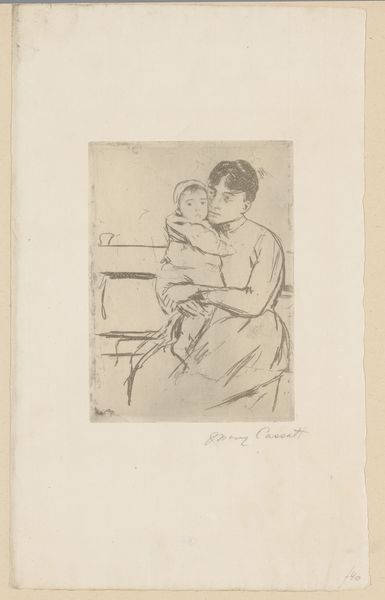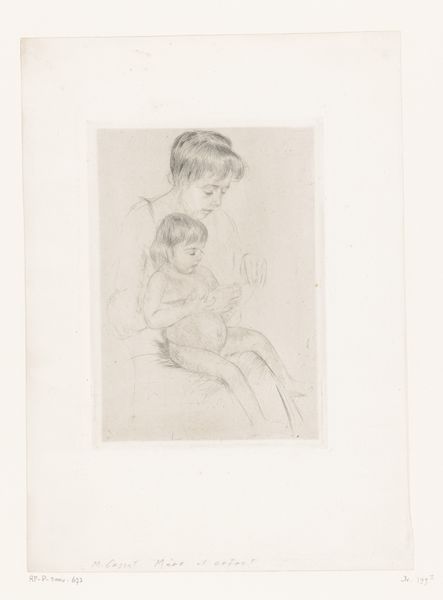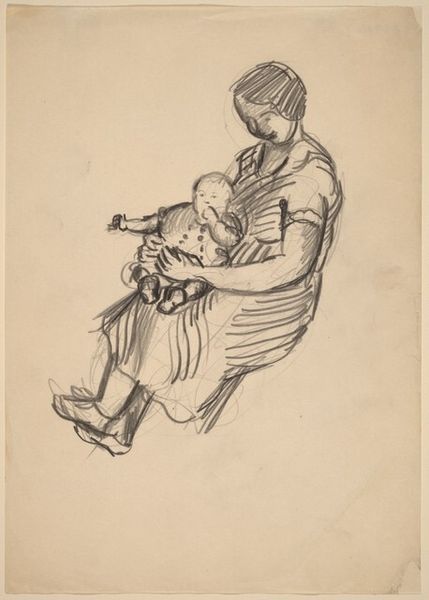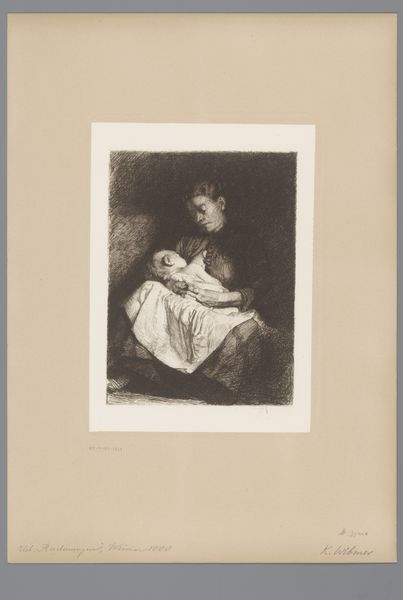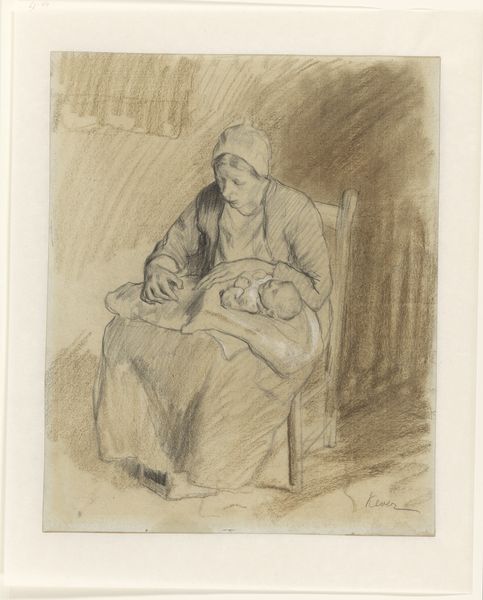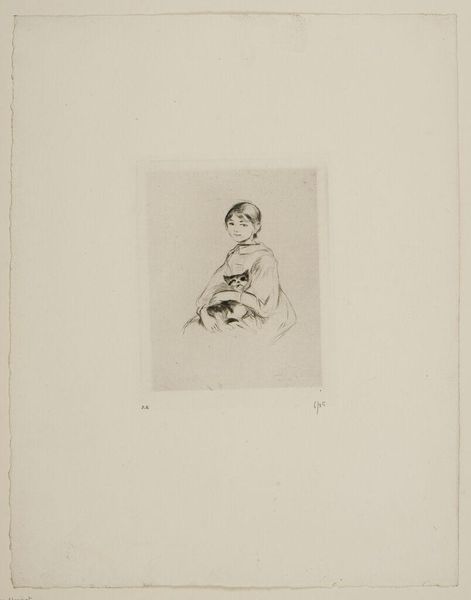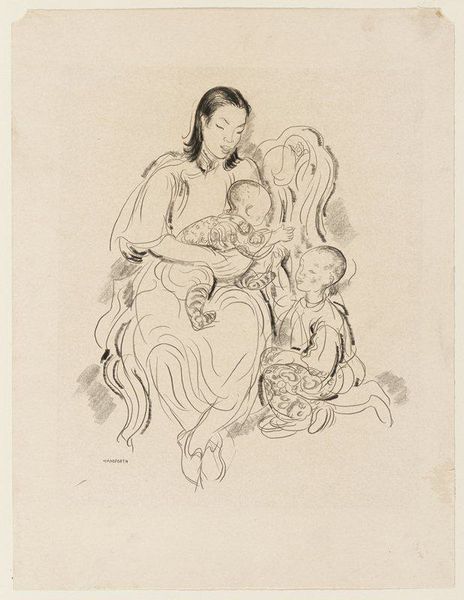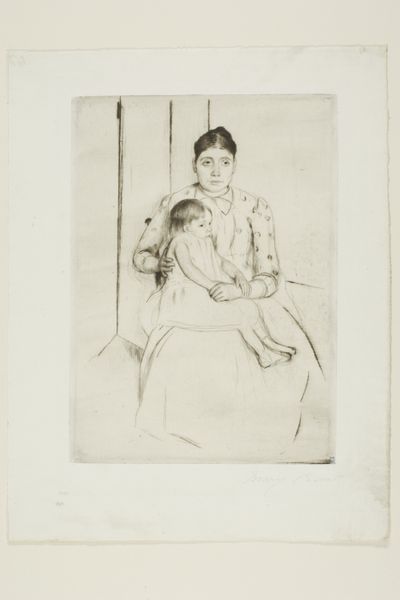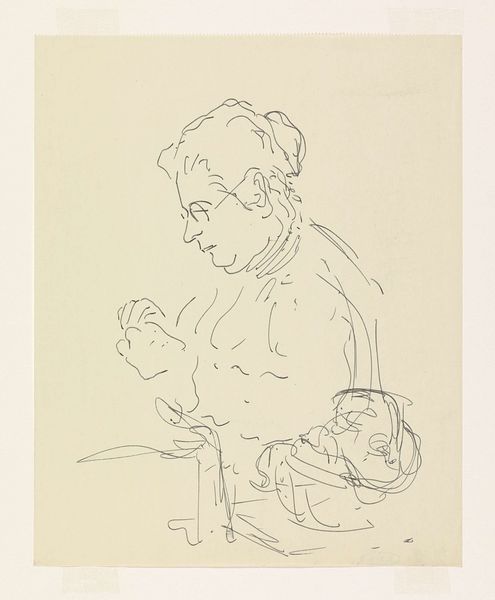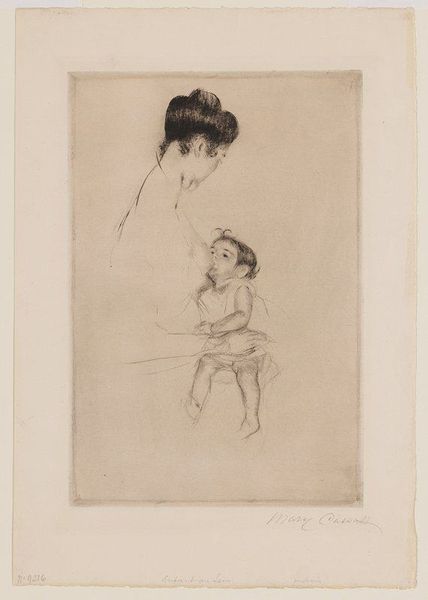
Dimensions: 9 1/2 x 12 7/16 in. (24.13 x 31.59 cm) (plate)12 3/4 x 16 13/16 in. (32.39 x 42.7 cm) (sheet)
Copyright: No Copyright - United States
Curator: We are standing before Mary Cassatt's print, "The Barefooted Child," created circa 1896-1897. This work in the collection of the Minneapolis Institute of Art employs etching and drypoint techniques, hallmarks of Cassatt’s printmaking practice. Editor: The print has an immediate softness about it. It’s largely muted, grayscale with faint touches of color, lending it a very intimate, domestic feel. The subjects are a girl sitting with an adult; her bare feet extend past the woman's printed dress as her arms mimic the gestures of the adult woman beside her. Curator: Absolutely. Cassatt was deeply interested in depicting the lives of women and children, reflecting a significant shift in representation within Impressionism. Notice how she subtly captures the child's independence within the domestic sphere. These kinds of prints were instrumental in widening access to art since collecting painting became inaccessible to the middle classes as wealth funneled into the hands of the richest citizens. Editor: Yes, the composition frames the young girl carefully. While there are only faint allusions to what seems to be interior domestic space behind her, Cassatt's strategic framing focuses the viewer's gaze on the figures and emphasizes their interconnectedness. It makes you consider the subtle nuances of familial relationships in contrast to what feels like an almost economic struggle being alluded to with the child's bare feet. Curator: Consider also how printmaking served as a way for Cassatt to participate actively in the art world while navigating the gendered constraints placed upon women artists. The turn to printmaking and other minor-seeming media allowed women a freedom that had been historically denied to them when creating artwork on the official level. Editor: It's also hard to ignore the delicate lines that suggest emotional depth between these two individuals. She really makes you feel the subtleties and emotional complexities within these domestic interactions. Curator: Cassatt's portrayal encourages us to acknowledge women and their interior lives while simultaneously questioning social and cultural barriers against the participation of women artists in official settings. Editor: Ultimately, Cassatt’s delicate rendering invites viewers to reflect on the intimacy, accessibility, and enduring importance of familial representation during the late 19th century.
Comments
minneapolisinstituteofart almost 2 years ago
⋮
Well known for oils and pastels, Mary Cassatt had a brief but fruitful acquaintance with aquatint in the 1890s. Originally she took up the medium to see if she could approximate the feel of Japanese woodblock prints she had seen exhibited in Paris. The MIA's impression of The Barefooted Child, depicting a game of patty-cake, is the only known example of the fourth state, in which Cassatt experimented with a gray and yellow color scheme. The final state ended up being more colorful.
Join the conversation
Join millions of artists and users on Artera today and experience the ultimate creative platform.

